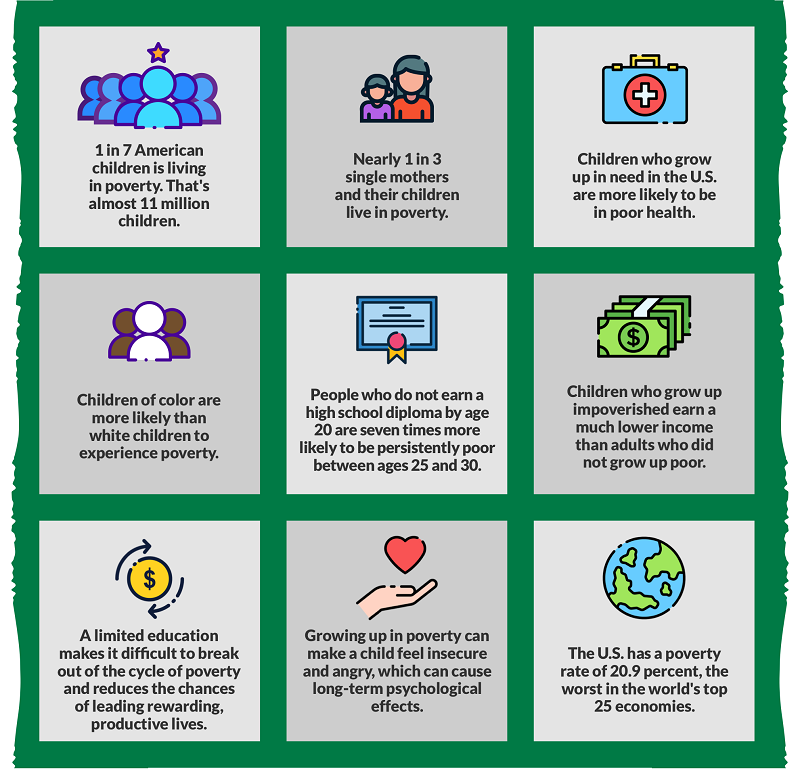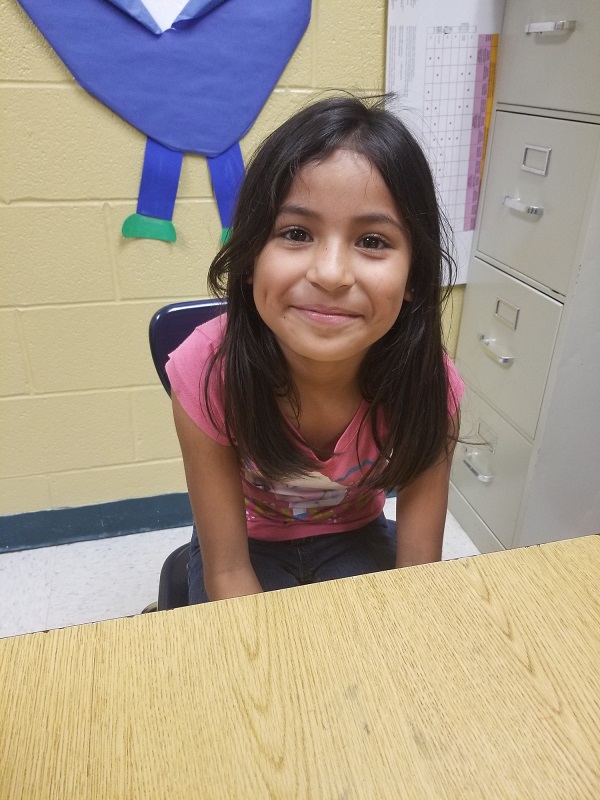Site will be
unavailable for maintenance from June. 4, 11:30 p.m., to June 5, 12:30 a.m. ET. Thank you for your
patience!
Child Poverty in America
Posted on 11/04/2013
Child Poverty in America
Updated 1/26/2022
There’s widespread poverty in our country, and it might be much closer to home than you think. A boy or girl in your child's school may be living in their family’s car. A child who lives right around the corner from you may be going to bed at night with a stomach burning from hunger.
The effects of poverty are complex and can follow a child into adulthood. Living in long-term need makes it difficult -- if not impossible -- for a person to lift themselves and their family out of hardship.
Although the economy of the United States was showing signs of improvement before COVID-19, poverty is an escalating issue in many states, particularly in the South. According to a report published by the Southern Education Foundation, the impact of poverty on education among schoolchildren living in the South is an urgent problem.
"No longer can we consider the problems and needs of low-income students simply a matter of fairness… Their success or failure in the public schools will determine the entire body of human capital and educational potential that the nation will possess in the future."
–Southern Education Foundation

Statistics on child poverty in the U.S.
Today, a staggering 1 in 7 children in America lives in poverty. These children may experience hunger, limited education and fewer work opportunities, and they may find it challenging to break the cycle of poverty. Because of these obstacles, they are at greater risk for adverse effects to their mental health.
Even though the United States is one of the wealthiest countries in the world, the wealth gap is so wide that we have the highest rate of poverty in world’s top 25 economies at 20.9 percent. The future of our country and our children's safety depends on making strides to correct the high poverty rate.
One of the most impactful ways you can help end the cycle of poverty in our country -- or any country -- is by investing in children's education. That includes making sure that children attending school can concentrate and succeed because they have enough food to eat.
We must join forces to give children in need in our country the resources and education they require to rise above poverty and fulfill their potential. This is not charity. It's an investment in the future of our own children and the country they call home.

Loading...

More on United States


